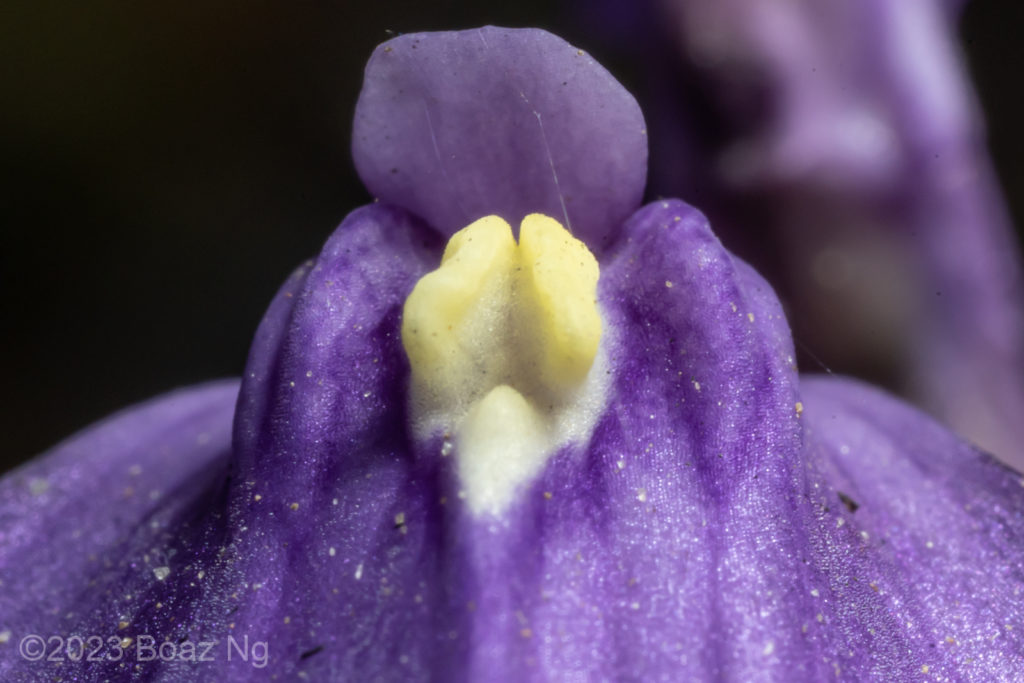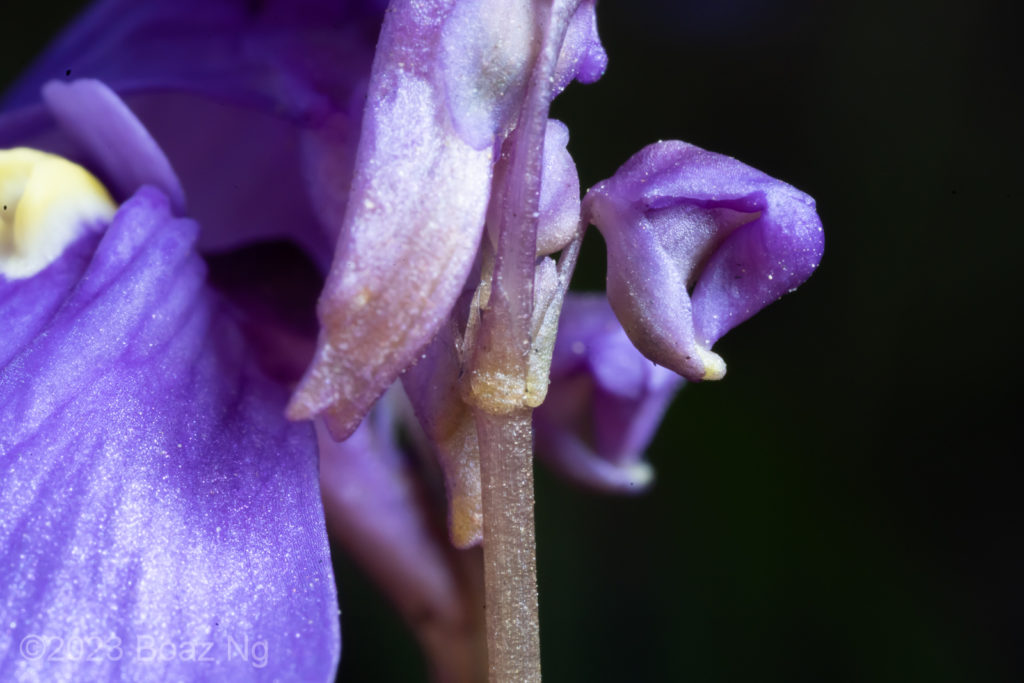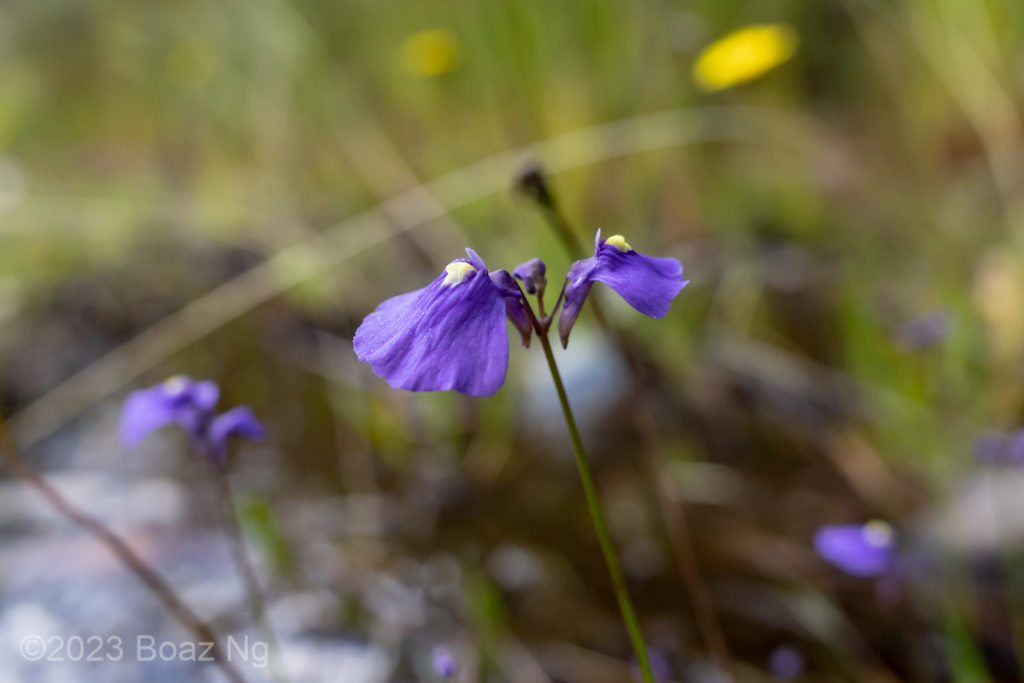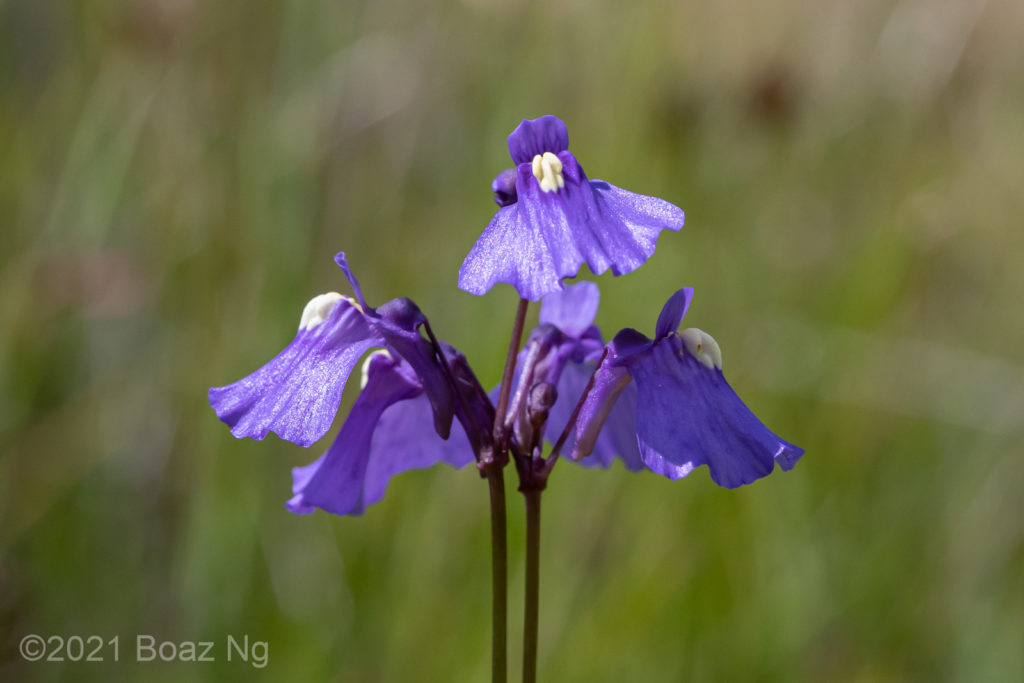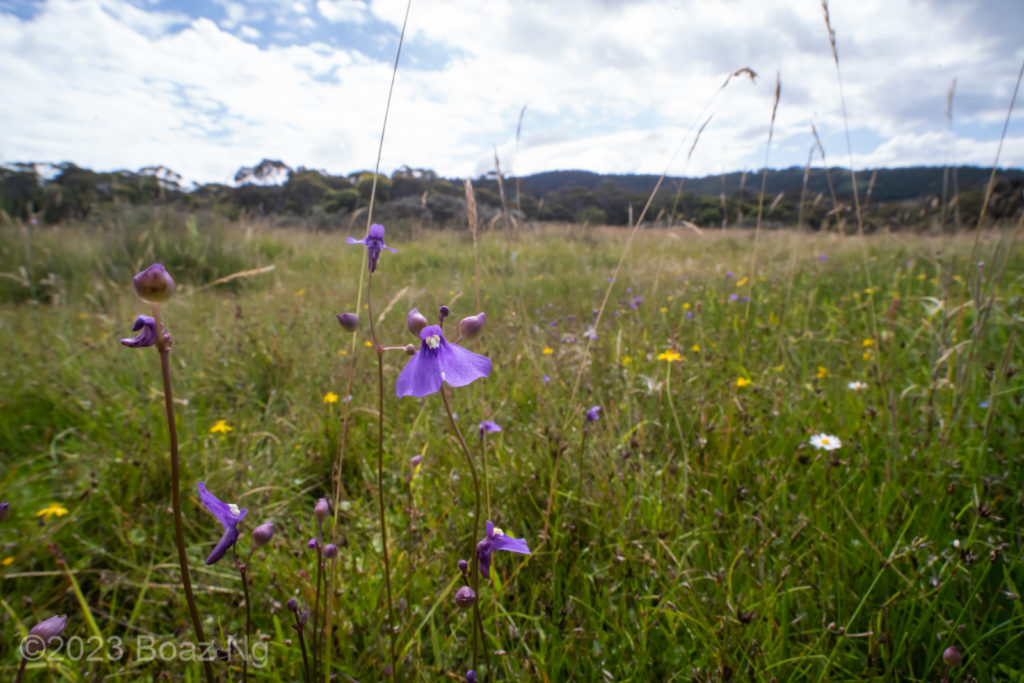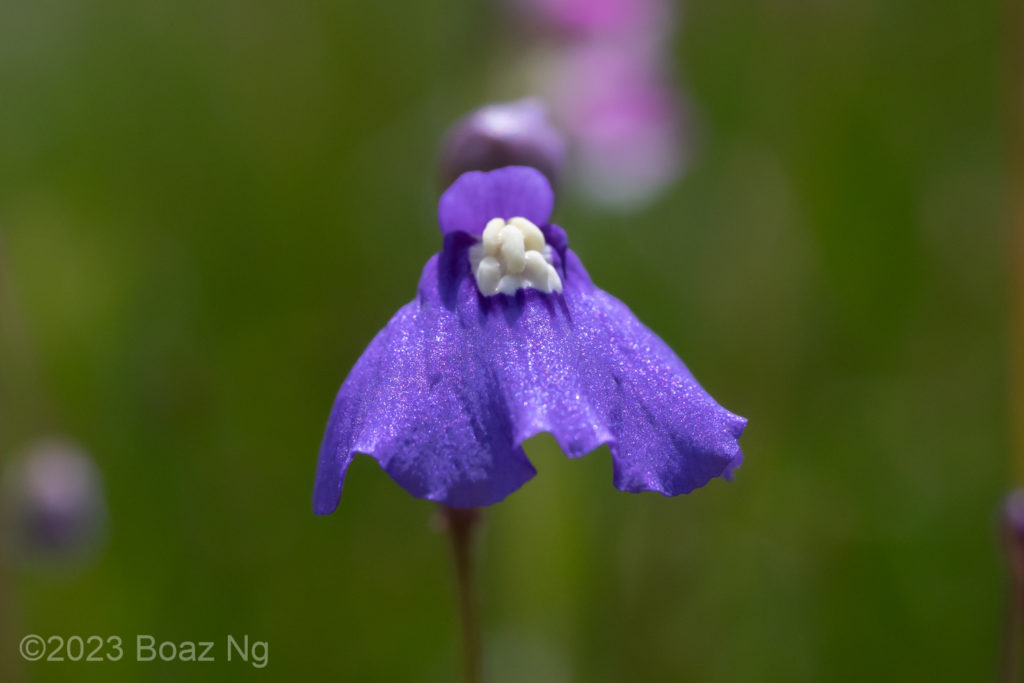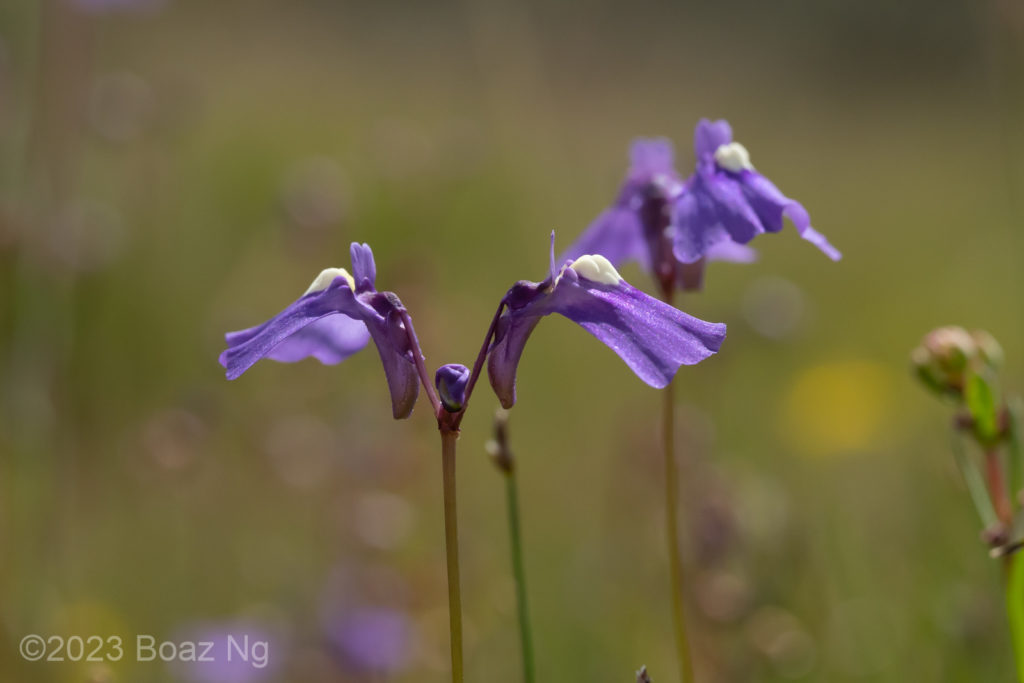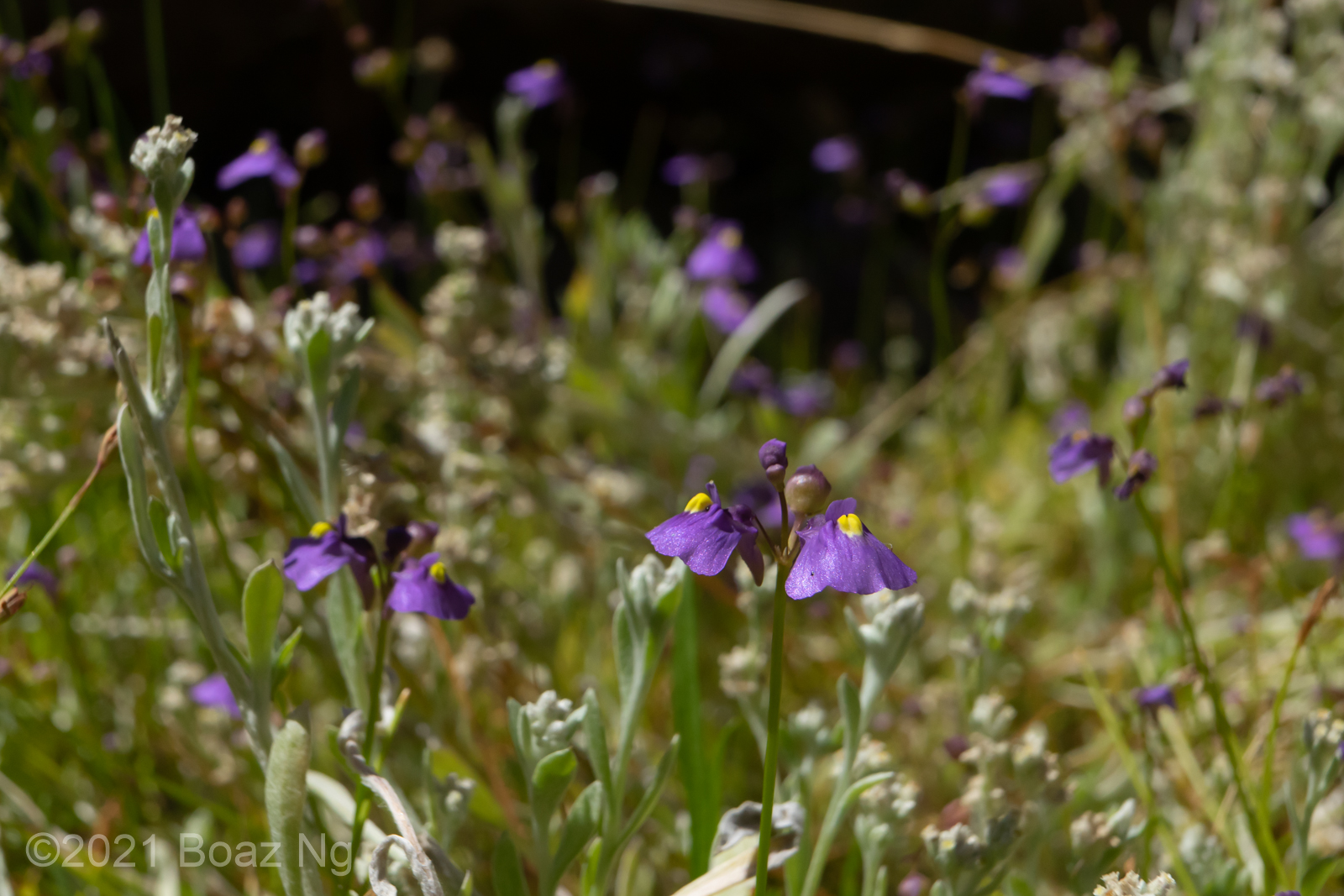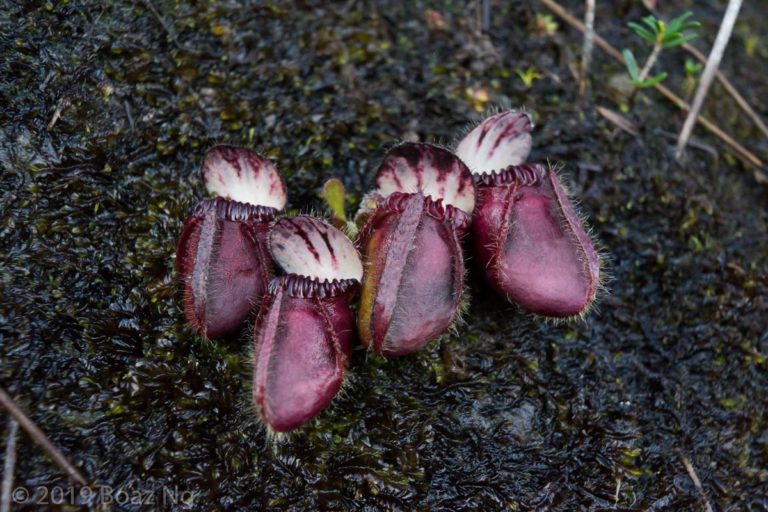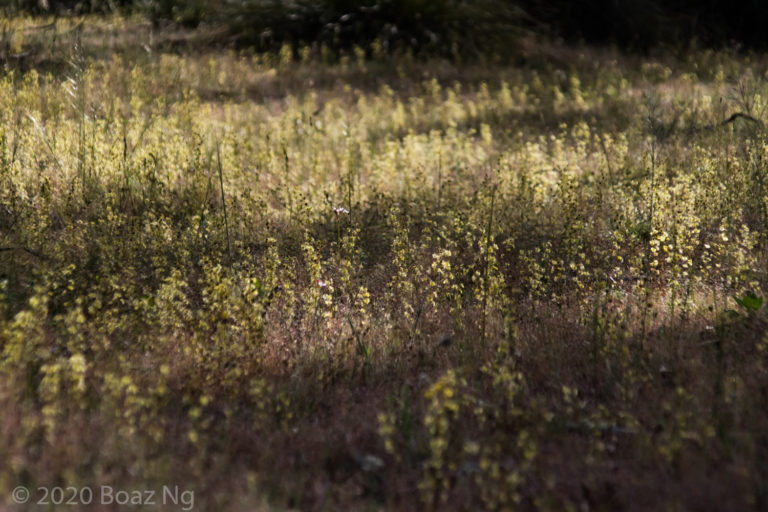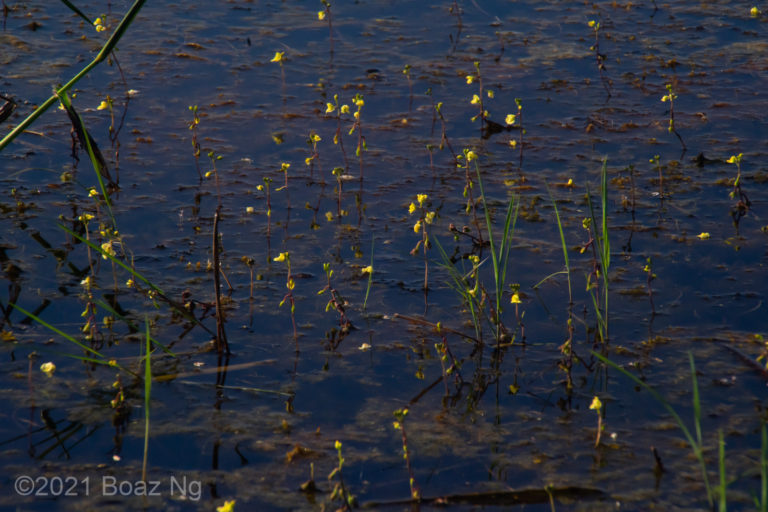A recent taxonomic revision by Jobson (2020) found that the taxon previously referred to as the ‘tuber forming variety of U. dichotoma’ was actually genetically related to U. beaugleholei. This taxon is now called Utricularia beaugleholei subsp. orientalis, with the epithet referring to the relatively eastern distribution of the plants.
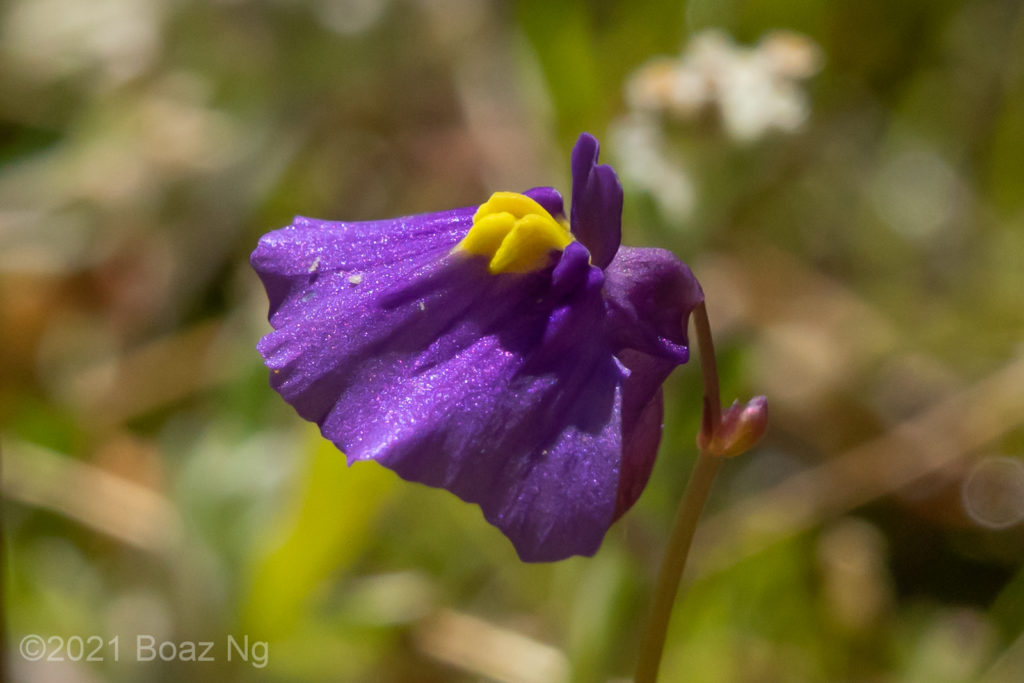
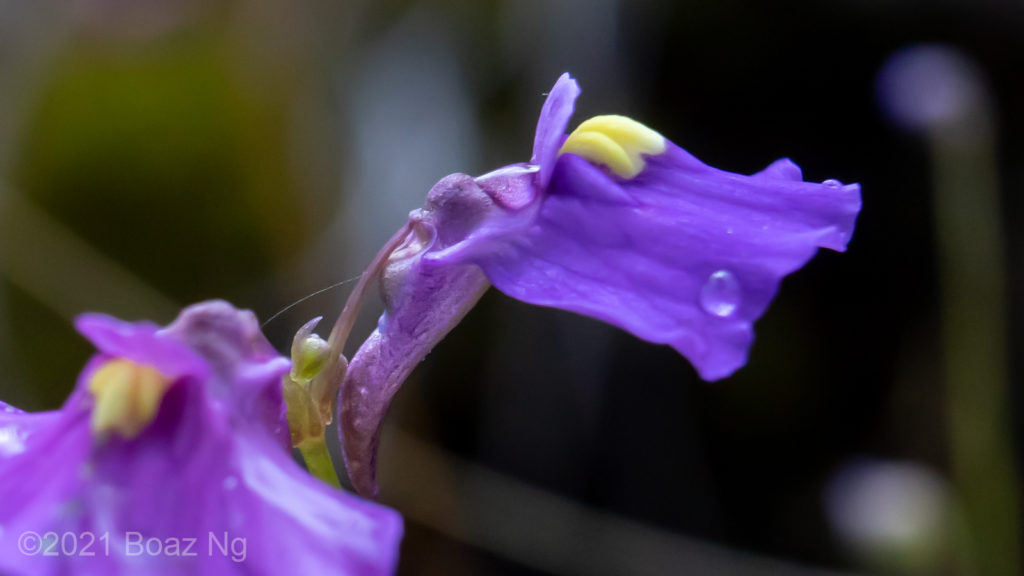
Within its range, the exact shape of the flowers of U. beaugleholei subsp. orientalis varies considerably. The taxon is best identified through the palate of the flower, which feature a tight cluster of prominent and narrow yellow ridges, flanked by sets of purple ridges. Although there is variation within a population, specimens often have greater than three distinct yellow ridges. Overall, the lower corolla tends to be rather ‘geometric’ in appearance, with roughly transitioning angles and bumps, especially near the palate. The corolla spur is slender, pointed, and slightly longer than the lower corolla lip. The upper corolla lip is fairly short in proportion, and sometimes features faint vertical nerves (a diagnostic feature in the paper, but personally I’ve seen that they are not always present).
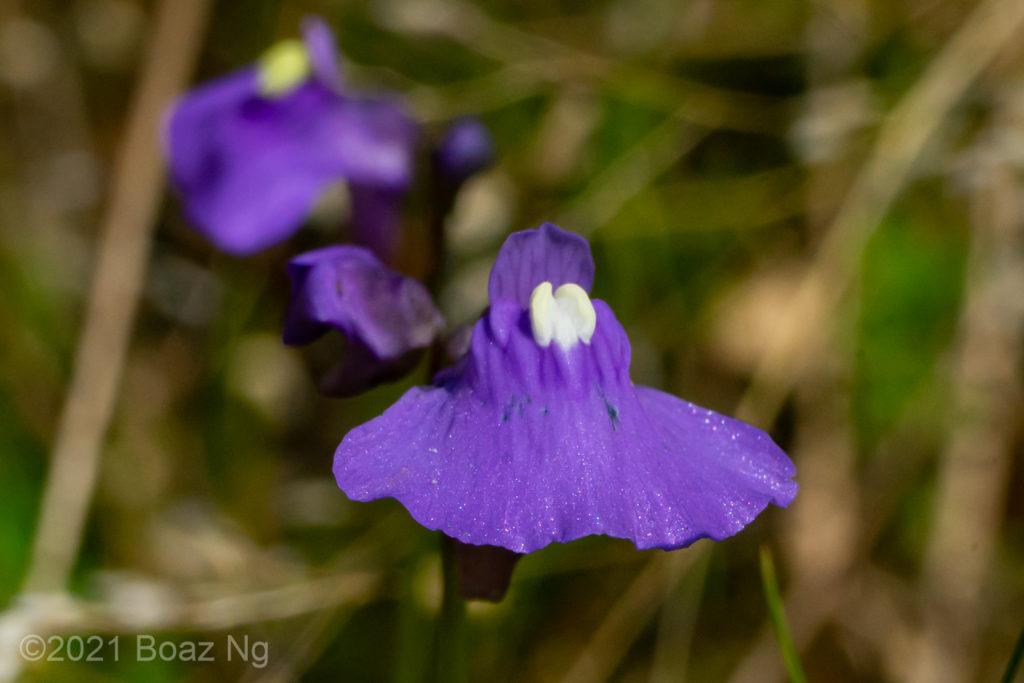
The leaves of the taxon are small and green, with the portions above the soil surface being roundish and scale-like. As its environment dries out, the species can grow as a perennial through the formation of resting tubers. During drought years, it is likely to persist through seed in the soil.
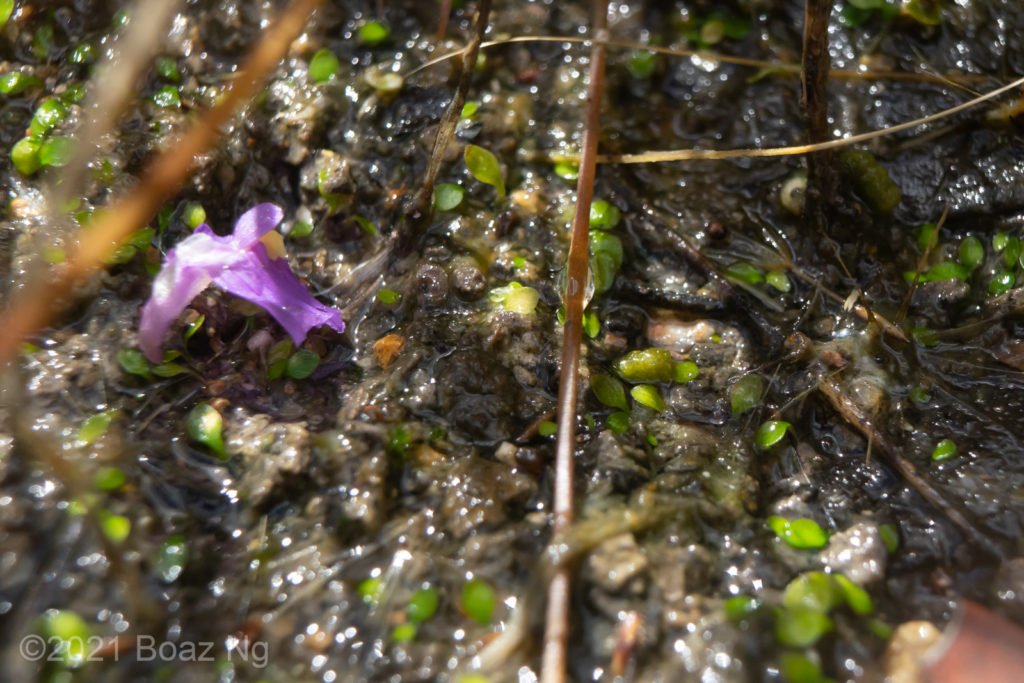
U. beaugleholei subsp. orientalis is usually found inland of the Great Dividing Range, from central Victoria, extending through the inland plains of southeast NSW and the ACT through to the western edge of the Blue Mountains. It is also known from Tasmania. The species inhabits seasonally wet habitats such as the sandy clay banks of creeks, springs, roadside gutters and grassy soaks around farmland dams and creek systems.
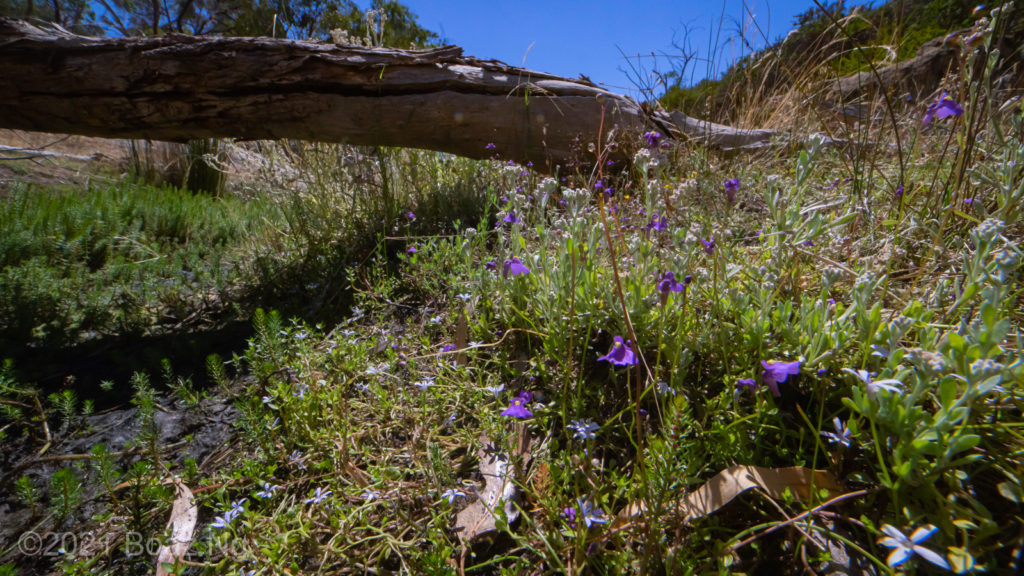
Within its range, U. beaugleholei subsp. orientalis grows in geographical proximity to U. dichotoma subsp dichotoma and subsp. aquilonia. It is morphologically distinguished from U. dichotoma by its bracts which lack a downwards-pointing spur at the base (those of either U. dichotoma subspecies are have bracts that are spurred at the base). Although there is variation, populations of U. beaugleholei subsp. orientalis will typically have many individuals with palates that have greater than three prominent yellow ridges (U. dichotoma typically has 2-3 yellow ridges that are less prominent).
The subspecies is distinguished from U. beaugleholei subsp. beaugleholei by its lower corolla lip, which is moderately flared and has a tight clustering of very prominent yellow ridges at the palate (that of subsp. beaugleholei is widely flared and features 4-11 less prominent and evenly spaced yellow ridges).
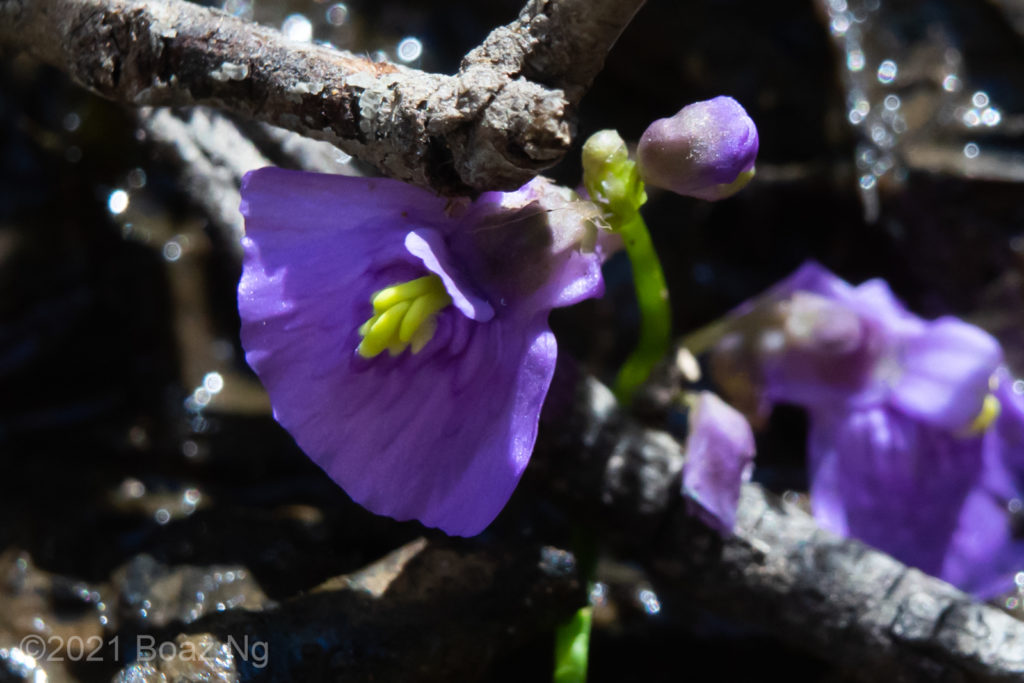
All images above depict plants from near Wangaratta in NE Victoria
